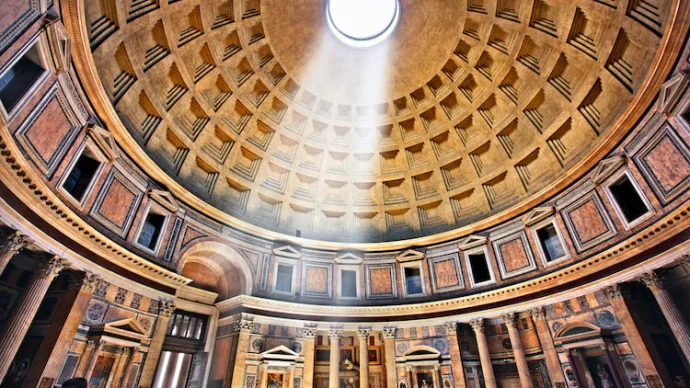About Atrium Vestae
The Atrium Vestae or House of the Vestal Virgins in the Roman Forum was a 50-room palace in Ancient Rome. Originally part of the Temple of Vesta, the Atrium Vestae served as the home of the priestesses of the goddess of the hearth, Vesta.
These holy women were known as the Vestal Virgins and their role was seen as integral to the continuity and security of Rome. Little remains of Atrium Vestae except for a series of statues displayed in a well-tended courtyard together with the walls of some of its rooms.
Atrium Vestae history
The complex of the Atrium Vestae was built at the foot of Rome’s Palatine Hill, in the heart of the Roman Forum where a sacred grove was located. While the grove was encroached upon as the city expanded and was eventually destroyed in the fire of 64 AD, the atrium was rebuilt.
Most importantly, the Atrium was situated beside the Temple of Vesta dating back to the 8th century BC and whose flame was continuously kept alight by the Vestal Virgins. The complex was large for only 6 virgins, but included reception rooms, storerooms, baths and apartments for each Vestal and her slaves.
Until Augustus moved his residence to the palace on the Palatine, the domus publica where the Pontifex Maximus dwelled was attached to the Atrium Vestae was his home. Fires in the 3rd and 1st centuries BC and again in 64 AD meant the house and temple of the Vestals had to be repaired, particularly by emperors Nero and Trajan.
After the College of the Vestals was dissolved and Christianity was introduced by Emperor Theodosius I in the late 4th century AD, the Atrium Vestae was used to house officials of the imperial court and later, papal court. The site was eventually abandoned between the 11th and 12th centuries.
Archaeological finds from the site when it was excavated in 1877 included a hoard of 397 golden coins from the 5th century as well as 830 Anglo-Saxon coins from the 9th and 10th centuries, suggesting at the importance and wealth of the inhabitants of the Atrium both during and long after it was the home of the Vestal Virgins.
Atrium Vestae today
Despite there being little remains of the once-grand palace of the Vestal Virgins, today visitors can tour the site on which the great Atrium Vestae was built and see the original floor plan of the home. Follow the old corridors of the Atrium to view remaining statues of the Vestals, including that of Numa Pompilius, mythological founder of the cult.
Afterwards, you can explore the rest of the ancient Roman Forum.
Getting to the Atrium Vestae
The Atrium Vestae is accessible on foot through the Roman Forum. To reach the Forum via public transport (recommended in Rome’s busy centre) head for the Colosseo metro stop on lines MEB and MEB1 as well as bus lines on the burgundy route (51, 75, 85, 87, 117 and nMB). From here it is a 10 minute walk.
Featured In

Roman Temples
Discover incredible Roman temples you can still visit today, from Baalbek to the Pantheon and more, includes an interactive map of surviving temples from ancient rome.




















